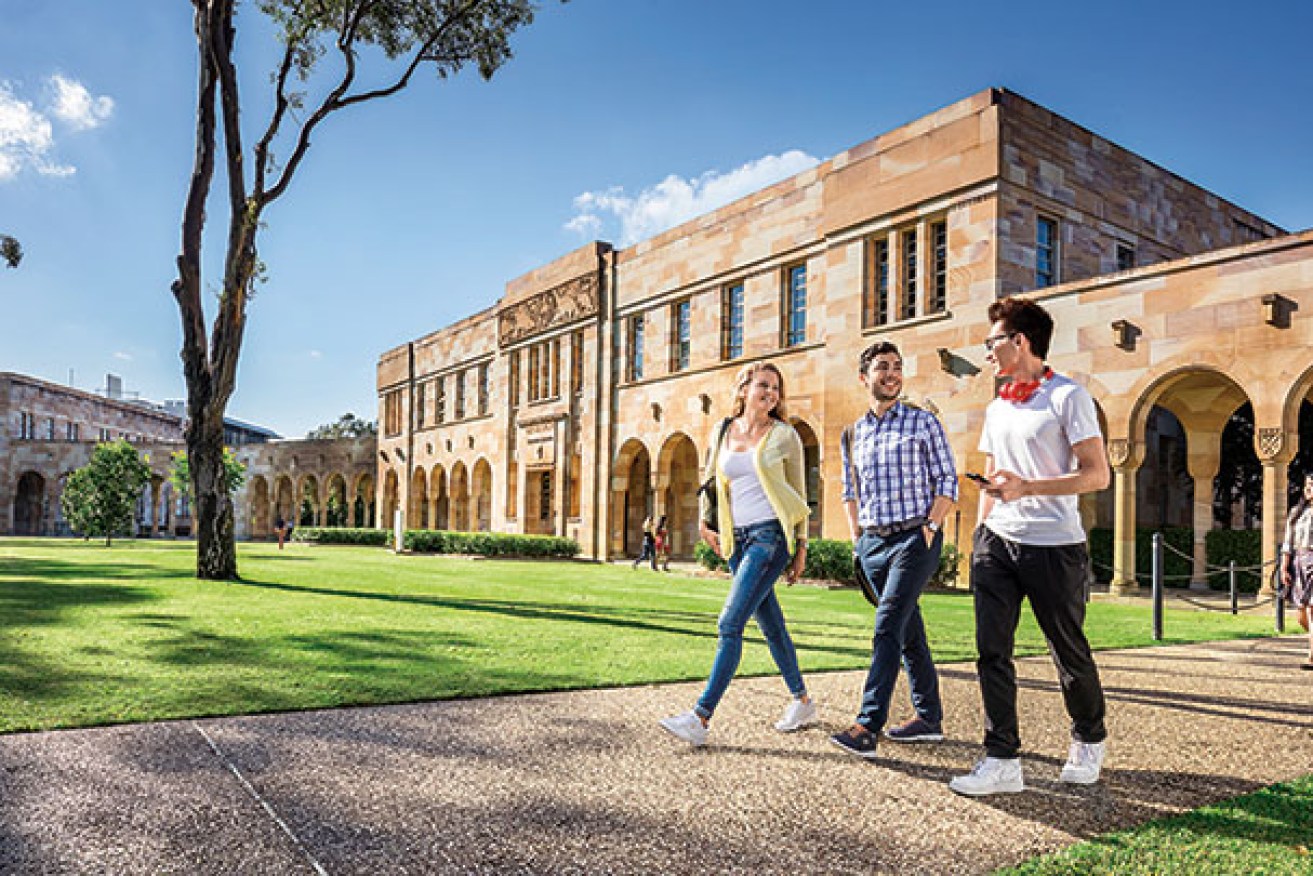Queensland’s universities deliver a lesson in how to survive a global pandemic
Queensland’s seven public universities have put the best light on the past 12 months in their just-filed 2020 annual reports but the battle for survival has barely begun writes Robert Macdonald.


The “Finding the Silver Lining in the Age of COVID-19 Award” must surely go to Central Queensland University.
The sudden closure of borders in March last year hit the Rockhampton-based university hard and fast – more than 30 per cent of its 27,000 enrolments were international students.
CQU calculated it could be facing $100 million a year in losses for as long as borders remained closed.
It took “decisive action” to “immediately reset operations and find immediate, ongoing cost savings of up to $50 million annually”.
It froze pay for senior staff and cut executive salaries by 20 per cent.
It cut its operational divisions from seven to four, tightened up management structures and permanently closed its Sunshine Coast campus at Noosa and study centres at Biloela and Yeppoon.
More than 200 staff took voluntary separation packages and another 79 roles were “disestablished”.
Despite all this, CQU used its annual report for 2020, tabled in State Parliament last week, to look on the bright side.
“Even in a year that has presented so many challenges, CQUniversity was able to differentiate itself by showing leadership in responding to the pandemic and the financial impacts of COVID-19,” vice-chancellor and president, Nick Klomp wrote.
“In being arguably the first university to take decisive action and reset operations following the onset of the crisis, the university is now in a stronger position to meet the needs and challenges of a post-pandemic world.
“Indeed, CQUniversity’s reputation as a leader in agile and engaging online teaching has resulted in record numbers of domestic higher education and VET applications and enrolments in 2020 – 21.”
But it still ended up with an operating deficit last year of $34 million.
Queensland’s six other public universities — University of Queensland, James Cook, Sunshine Coast, Southern Queensland, Griffith and QUT – none of them as badly challenged as CQU, took a similar tack in their annual reports tabled last week.
Each of them, it seems, confronted the pandemic head on and weathered the year by restructuring, retrenching and embracing new technology to emerge leaner and more efficient, more agile and all the other things you have to do to survive a pandemic.
Some did better than others.
The University of the Sunshine Coast not only increased both academic and non-academic staff numbers during the year but also student numbers thanks to 1600 new enrolments at its new Moreton Bay campus at Petrie.
The University of Southern Queensland reported that the impact on its international student numbers in 2020 was minimal because of its “established expertise in online teaching delivery”.
“Although it is not practical to estimate the continuing impact of COVID-19 after the reporting date, management are confident the financial position of the university will remain strong,” it reported.
QUT was so successful in its various cost-cutting and restructuring efforts it ended the year with an operating surplus of $25.2 million – more than two-and-a-half times higher than its original budgeted surplus of $9.6 million.
James Cook University reported pre-tax earnings of $24.2 million for the year, up from $ 16.5 million in 2019, largely a reflection of a $36 million, or six per cent, drop in expenses, to offset a similar decline in revenue.
UQ’s COVID-19 response was so successful it ended the year with a better-than expected surplus of $246 million, not far off the previous year’s $256 million.
It did so well it decided to repay the $7.8 million in JobKeeper payments to various of its not-for-profit, controlled entities.
UQ vice-Chancellor Deborah Terry could even see some positives coming from the pandemic.
“I am confident that UQ’s response to the pandemic has helped to instigate significant changes that will benefit the University in 2021 and beyond,” she said.
“Certainly, the sudden mass adoption of online learning will create new opportunities for designing more flexible educational programs and experiences – and it will enable us to offer students greater choice in how, where and when they study into
the future.
“The economic shock associated with the pandemic is already encouraging greater collaboration between government, industry and research organisations – and I am optimistic this is going to provide a vital boost to Australia’s innovation capacity over the coming years.”
Griffith reported a net operating lost of $5.1 million – the first in its 50-year history, despite some “very hard decisions” to reduce costs, including a program and course rationalisation resulting in the loss of about 300 jobs.
The university had estimated that without changes to its pre-pandemic 2020-2025 strategic plan, it was facing a revenue shortfall of $700 million over five years.
On the evidence of their latest annual reports, Queensland’s seven public universities made it through 2020, with the blunt instruments of cost-cutting, job losses, reducing course offering and shrinking management layers.
But all the signs are the battle for long-term survival has barely begun.












